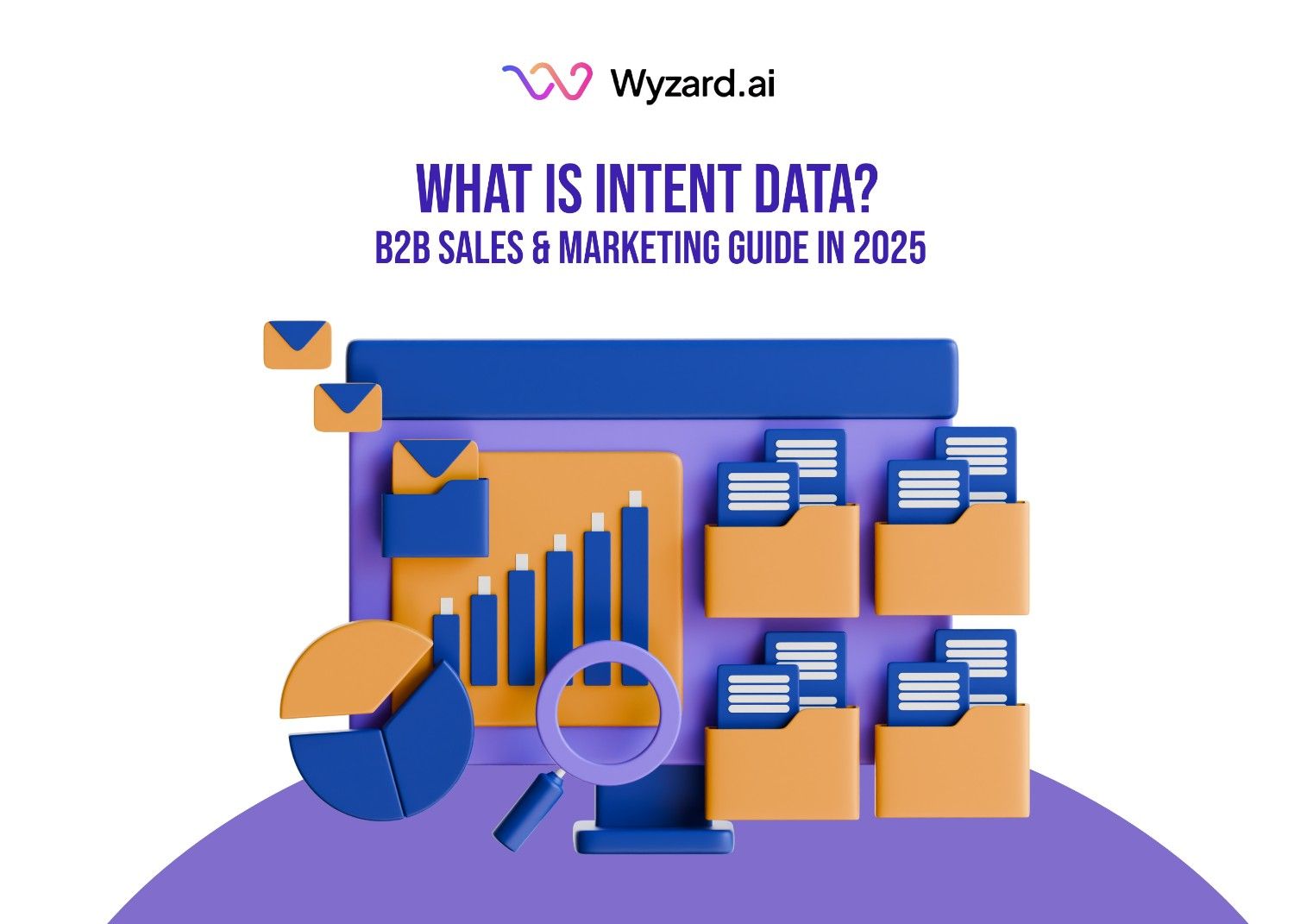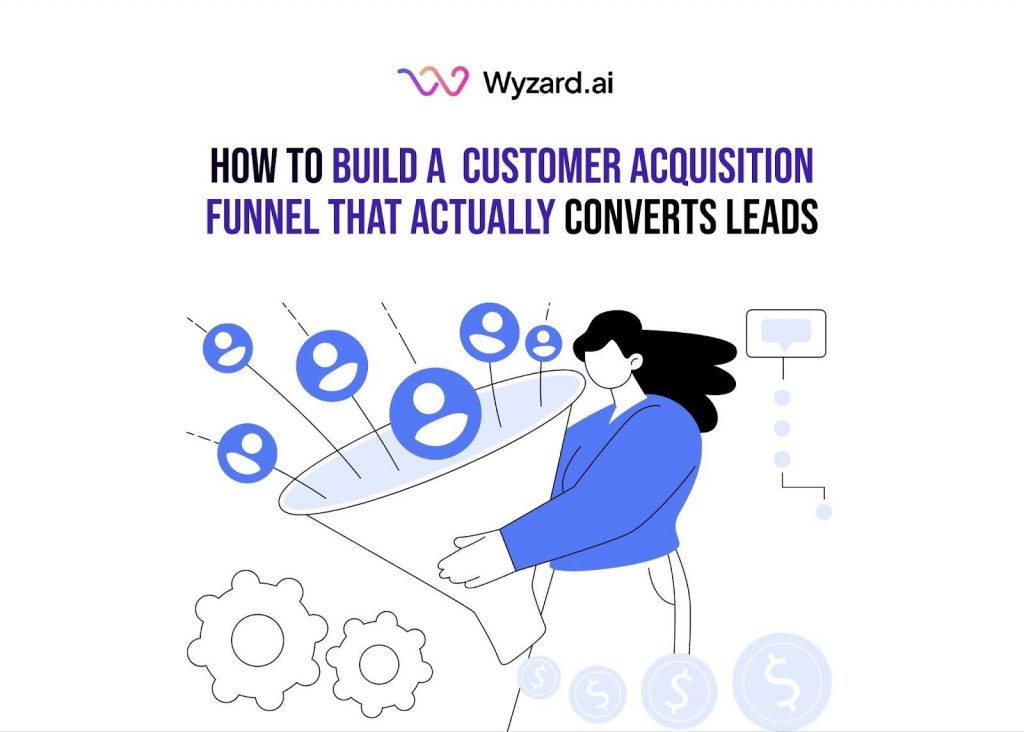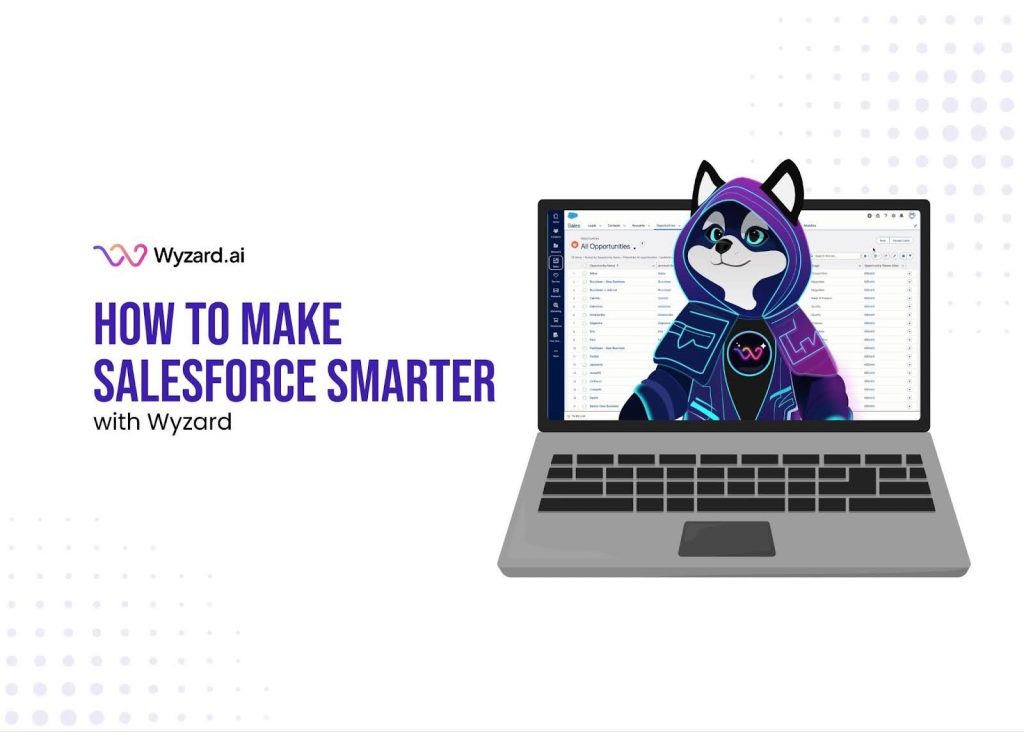You're generating traffic. Leads are visiting your website. But conversions? They're barely moving the needle. The problem isn't your ...

Subscribe Now
Your sales team just spent hours researching accounts that showed zero buying interest. Meanwhile, three companies actively looking for your solution signed with a competitor. Sound familiar?
This disconnect happens because most teams operate blind; they can’t see which prospects are actively researching solutions right now. Intent data changes that. It reveals which companies are in active buying mode by tracking their digital behavior across the web.
For GTM teams at growing SaaS companies, this visibility matters more than ever. Budgets are tight, sales cycles are longer, and every conversation needs to count. Intent data helps you focus energy where it actually drives revenue.
What is intent data, and why does it matter?
Intent data tracks online behaviors that signal buying readiness. When someone at a target account downloads competitor comparison guides, visits pricing pages repeatedly, or searches for specific implementation questions, that’s intent data at work.
Think of it as a heat map of buyer interest. Instead of guessing which accounts might convert, you see exactly who’s researching solutions in your category right now. This behavioral insight shows not just who your prospects are, but when they’re ready to buy.
The data comes from actions prospects take across business websites, content platforms, and search engines. Each signal, whether it’s reading a case study or watching a product demo, adds to a picture of purchase intent. When signals cluster around specific topics related to your solution, that account moves from cold to hot.
| Signal Type | What It Reveals | Action It Triggers |
| Content downloads | Research depth | Personalized nurture sequence |
| Pricing page visits | Budget consideration | Sales outreach with ROI focus |
| Competitor searches | Active evaluation | Comparison of content delivery |
| Implementation queries | Decision stage proximity | Demo invitation |
How B2B intent data gets collected
Two main categories of intent data exist: first-party and third-party. Each offers different visibility into buyer behavior.
First-party intent data comes directly from your owned channels. This includes website visits, email engagement, content downloads, form submissions, and product trial behavior. You control this data completely, and it’s highly accurate for accounts already aware of your brand.
Wyzard.ai captures first-party signals automatically through its tagging system. When prospects interact with your content, these behaviors get tracked and scored in real-time. The platform then connects these signals across your entire GTM motion, from initial website visit through closed deal.
Third-party intent data reveals behavior outside your properties. Reputable providers collect this from publisher networks, business content sites, and research platforms. When a prospect reads articles about solutions like yours on industry sites, that activity gets captured and mapped back to their company.
The key difference: first-party shows who already knows you, while third-party reveals prospects researching your category before they ever visit your site. Both matter, but a third party gives you the earliest possible entry point into a buying conversation.
Quality varies significantly across intent data sources. The best providers use cooperative networks where publishers voluntarily share behavioral data within transparent, consent-based frameworks. This approach respects privacy while delivering accurate signals.
Wyzard.ai combines both data types through its proprietary network. It monitors millions of interactions across business sites, then uses AI to identify genuine buying signals versus casual browsing. The platform distinguishes between someone casually reading an article and an account actively comparing vendors.
What makes intent data actionable for GTM teams
Raw behavioral signals mean nothing without context. The real value comes from connecting those signals to revenue outcomes.
Most intent platforms dump data into spreadsheets and leave interpretation to you. That creates a new problem: your team now has data overload instead of data blindness. Sales reps don’t have time to analyze spreadsheets. They need clear direction on which accounts to call and what to say.
Wyzard.ai solves this through its Signal-to-Revenue AI approach. The platform doesn’t just collect intent signals; it analyzes them against your historical deal data to predict actual conversion likelihood. It identifies patterns between how prospects behave and which ones eventually buy.
This AI analysis categorizes accounts into stages: Cold, In-market, Engaged, or Hot. Each classification triggers specific GTM actions automatically. An In-market account might enter a targeted content campaign, while a Hot account generates an immediate sales alert with talking points based on their specific research topics.
The platform delivers three critical capabilities:
Connected signal capture. Wyzard.ai pulls intent data from across your tech stack, website analytics, CRM interactions, email engagement, ad clicks, and third-party research behavior. All signals flow into one system, creating a complete view of account activity.
Live orchestration. When buying signals spike, the platform triggers coordinated responses across channels. A prospect who downloaded your guide gets tagged in your CRM, enters a nurture sequence, and sees relevant ads, all automatically based on their demonstrated interests.
Human-supervised automation. The system suggests actions but keeps humans in control. When an account hits Hot status, your sales team gets notified with context on what the prospect researched. They can approve recommended outreach or adjust the approach before anything goes out.
This orchestration turns scattered signals into revenue opportunities. Instead of discovering buyer interest weeks after it peaks, you engage prospects while they’re actively evaluating solutions.
Why GTM teams are adopting intent data in 2025
The gap between marketing activity and revenue has never been wider. Traditional lead generation can’t keep up with this complexity. By the time a prospect fills out a form, they’ve already completed 70% of their buying research. You’re entering conversations late, often after they’ve formed opinions about competitors.
Four measurable impacts drive this adoption:
Faster pipeline generation. Teams using intent data identify in-market accounts 4-6 weeks earlier than those relying only on form fills. This head start means you shape buyer perception instead of fighting existing preferences.
Higher conversion rates. When outreach aligns with active research behavior, response rates jump. Personalized messages based on actual interests convert 2-3x better than generic sequences.
Efficient resource allocation. Sales teams stop wasting time on accounts showing zero interest. Marketing budgets flow toward prospects actually researching solutions. Both teams focus energy where it drives real results.
Shorter sales cycles. Engaging prospects at the right moment with relevant information accelerates decisions. You’re not pushing; you’re responding to expressed interest with helpful guidance.
How to implement intent data without adding complexity
Most teams hesitate because they assume intent data means another tool, more training, and workflow disruption. The opposite should be true; the right approach simplifies operations.
Start with clear goals. Define what success looks like. Do you want to improve account prioritization? Boost campaign performance? Shorten sales cycles? Focus on one primary outcome initially.
Map your ideal customer profile. Intent data works best when you know exactly who you’re looking for. Static ICPs based on firmographics miss market changes. Wyzard.ai automatically builds dynamic ICPs by analyzing your CRM data, specifically, won and lost deals. Its algorithm identifies patterns in high-velocity accounts (those that close faster with better outcomes), then finds similar companies showing active intent signals.
Integrate with existing workflows. Intent data should flow into the places your team already works. Wyzard.ai pushes intent scores and stage classifications directly into your CRM. Sales reps see account status without switching tools. Marketing automation triggers based on intent stages without manual intervention.
Create stage-based playbooks. Different intent levels require different responses. Build simple playbooks for each stage:
- Cold: Awareness-building content, broad targeting
- In-market: Educational resources, use case content
- Engaged: Comparison guides, ROI calculators
- Hot: Direct sales outreach, demo invitations
Test and refine scoring. Not all signals matter equally for your business. Wyzard.ai lets you adjust weighting between first-party engagement and third-party research signals. Start with default settings, then customize based on which signals actually predict your closed deals.
The platform handles technical complexity behind the scenes. You define strategy; the AI executes coordination across tools and channels.
Common mistakes that waste intent data value
Even with good data, implementation failures kill results. Three patterns consistently undermine intent programs:
Treating all signals equally. Someone reading a single blog post shows a different intent than someone downloading three competitor comparisons. Weight signals by depth and recency. Wyzard.ai’s composite Intent Score does this automatically, applying weighted values to various signal types to calculate a single, actionable score from 0-100.
Ignoring data quality. Not all intent providers source data ethically or accurately. Some rely on bidstream data from ad exchanges, information that’s incomplete and potentially non-compliant with privacy regulations. Choose providers transparent about collection methods and compliant with GDPR and CCPA requirements.
Letting sales and marketing work from different data. When marketing sees one view of account intent and sales sees another, coordination breaks down. Both teams need access to the same signals and definitions. Wyzard.ai solves this by pushing unified intent data into shared systems like your CRM, creating a single source of truth.
Where intent data makes the biggest impact right now
Three specific applications consistently deliver measurable ROI:
Account-based campaign precision. Instead of broad targeting, layer intent data over your target account list. Only activate campaigns when accounts show research behavior. This approach typically cuts wasted ad spend by 40-60% while improving conversion rates.
Sales trigger alerts. Configure notifications when key accounts hit specific intent thresholds. A sudden spike in competitor comparison research should trigger immediate outreach. Time-sensitive engagement windows close fast, and intent data helps you act when interest peaks.
Retention and expansion signals. Existing customers researching additional use cases or complementary solutions signal expansion opportunities. Customers suddenly researching competitors indicate churn risk. Either way, intent data helps you engage proactively instead of reactively.
Wyzard.ai’s platform supports all three through its B2B Demand-Side Platform. Unlike impression-based advertising, it focuses on genuine engagement metrics—clicks, content views, and website visits. This ensures you’re reaching real prospects showing actual interest, not just serving ads to anyone matching demographic filters.
How Wyzard.ai connects intent signals to revenue
Here’s what makes Wyzard.ai different: most platforms stop at delivering intent data. They show you which accounts are being researched, then leave execution to you.
Wyzard.ai orchestrates the entire response. When buying signals appear, the platform automatically coordinates actions across your marketing automation, CRM, ad platforms, and sales engagement tools. It’s not just showing you opportunities, it’s converting them.
The system works through three connected layers:
Signal intelligence. Wyzard.ai monitors both your first-party engagement data and third-party research behavior across its proprietary network. Machine learning identifies patterns indicating genuine buying interest versus casual browsing.
Stage prediction. The AI analyzes signals against your historical deal data to classify accounts into precise buying stages. A company repeatedly visiting your pricing page and downloading case studies moves from Engaged to Hot automatically.
Action orchestration. Based on stage classification, Wyzard.ai triggers coordinated responses. Hot accounts get immediate sales alerts with context on research topics. Engaged accounts enter nurture sequences with relevant content. In-market accounts see targeted ads across platforms.Everything connects through your existing tools. Wyzard.ai integrates with major CRMs, marketing automation platforms, and ad networks. Setup happens in hours, not weeks. Your team keeps using familiar systems; they just work smarter because intent signals guide every action.
FAQs
Intent data shows which companies are actively researching solutions in your category right now. Instead of calling every account on your list, sales reps focus on prospects who’ve downloaded competitor comparisons, visited pricing pages, or searched for implementation guides. This behavioral insight reveals buying readiness, so your team spends time on conversations that actually convert. Wyzard.ai scores each account from 0-100 based on signal strength, then classifies them as Cold, In-market, Engaged, or Hot, giving reps clear direction on who to contact and when.
First-party intent data comes from your owned channels—website visits, email clicks, content downloads, and trial activity. It shows prospects already aware of your brand. Third-party intent data tracks behavior outside your properties, like reading articles about your solution category on industry sites or searching for vendor comparisons. Third-party signals reveal prospects before they ever visit your website, giving you the earliest possible entry into buying conversations. Wyzard.ai combines both types to create complete visibility into account behavior across the entire research journey.
Most teams identify in-market accounts within the first week of implementation. Wyzard.ai integrates with your existing CRM and marketing platforms in hours, not weeks, so intent scores start flowing into your workflows immediately. The platform analyzes your historical deal data to build predictive models, then begins flagging accounts showing similar buying patterns. Teams typically see measurable impact, higher response rates, more qualified conversations, shorter sales cycles, within 30-45 days, as they refine playbooks based on which intent signals actually predict their closed deals.
No. Intent data should enhance your existing systems, not replace them. Wyzard.ai pushes intent scores and stage classifications directly into the CRM, marketing automation, and ad platforms you already use. Sales reps see account intent status in their normal workflow without switching tools. Marketing campaigns trigger based on intent stages through your existing automation. The platform handles coordination behind the scenes while your team keeps working in familiar systems; they just work smarter because buying signals guide every action.
Wyzard.ai’s AI analyzes signal patterns, not just individual actions. Someone reading a single blog post triggers a different response than someone downloading three competitor guides, watching demos, and visiting pricing pages repeatedly. The platform weighs signals by depth, recency, and alignment with your historical deal patterns. It compares current account behavior against the research patterns of accounts that actually closed, filtering out noise to surface genuine buying intent.
Other blogs
The latest industry news, interviews, technologies, and resources.
How to Make Salesforce Smarter with Wyzard.ai
Your CRM is packed with contacts, but how many buying signals are you missing right now? A prospect just ...

Unlock Real-Time HubSpot Automation with Wyzard.ai
Your HubSpot portal holds valuable data about every lead, deal, and customer interaction. But if you're waiting hours, or ...

 We’ve secured funding to power Signal-to-Revenue AI to GTM teams globally. →
We’ve secured funding to power Signal-to-Revenue AI to GTM teams globally. →


